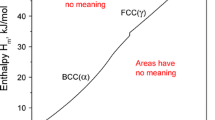Abstract
Transmission electron microscopy of freeze fractured and replicated samples (TEM) and polarizing light microscopy (PLM) are used to investigate the defect structures of the thermotropic and lyotropic mesophases of the nonsteroidal antiinflammatory drug fenoprofen sodium and of the thermotropic mesophase of the nonionic surfactant sucrose oleate (O1570). All mesophases have a layered, smectic structure. The thermotropic liquid crystal of fenoprofen sodium is an interdigitated smectic A phase (smectic Ad) having the highest viscosity of the investigated samples. The thermotropic mesophase of the sugar ester is also of the type smectic A, likely to be of subtype smectic A2 (bilayered smectic structure). The lyotropic mesophase is of lamellar liquid crystalline nature and has a much lower viscosity than the thermotropic mesophases. In the PLM the lyotropic fenoprofen mesophase has a strong tendency to form a pseudoisotropic texture, indicating a strong tendency to form undisturbed layered structures. Other textures exhibited in the PLM are fan-shaped texture and maltese-cross texture. Confocal domains, cylinders, pits and peaks as well as screw dislocations are found in great number in the TEM. However, no greater regions of undisturbed lamellar arrangement in the lyotropic mesophase could be detected. The only texture of the thermotropic fenoprofen mesophase visible in the PLM is the fan-shaped texture, indicating confocal domains as predominant structural elements. However, no confocal domains (tori or Dupin cyclides) are found in the TEM. In the PLM the sugar-ester mesophase exhibited a fan-shaped texture, maltese crosses and oily streaks as dominant textures. In the TEM only a few +π and −π disclinations and imperfect confocal domains could be detected. The discrepancies in the appearance of defect structures and textures between the mesophases as well as the discrepancies in the findings in the PLM and in the TEM investigations are caused by the different sample preparation and the different viscosities of the mesophases.
Similar content being viewed by others
References
West AR (1992) Grundlagen der Festkörperchemie. Verlag Chemie, Weinheim, 225–280
Gray GW, Goodby JWG (1984) Smectic Liquid Crystals — Textures and Structures. Leonard Hill, Glasgow
Demus D, Richter L (1978) Textures of Liquid Crystals. Verlag Chemie, Weinheim
Kléman M, Williams CE (1976) Phil Mag 35:33–56
Windholz M (ed) (1983) The Merck Index. Merck and Co., Inc, Rathway, p 573
Ryoto Sugar Esters Technical Information. Mitsubishi-Kasei Foods Company, Tokyo
Rades T, Müller-Goymann CC (1992) Pharm Pharmacol Lett 2:131–134
Rades T (1994) Das Schmelz und Loesungsverhalten von Fenoprofen-Natrium Und seine Wechselwirkungen mit hydrophilen Polymeren, Thesis, Braunschweig
Rades T, Müller-Goymann CC (1994) Eur J Pharm Biopharm 40(5):277–282
Hamann HJ, Müller-Goymann CC (1987) Acta Pharm Technol 33:67–73
Author information
Authors and Affiliations
Rights and permissions
About this article
Cite this article
Müller-Goymann, C.C., Rades, T. Electron and light microscopical investigation of defect structures in mesophases of pharmaceutical substances. Colloid Polym Sci 275, 1169–1178 (1997). https://doi.org/10.1007/s003960050198
Received:
Accepted:
Issue Date:
DOI: https://doi.org/10.1007/s003960050198




